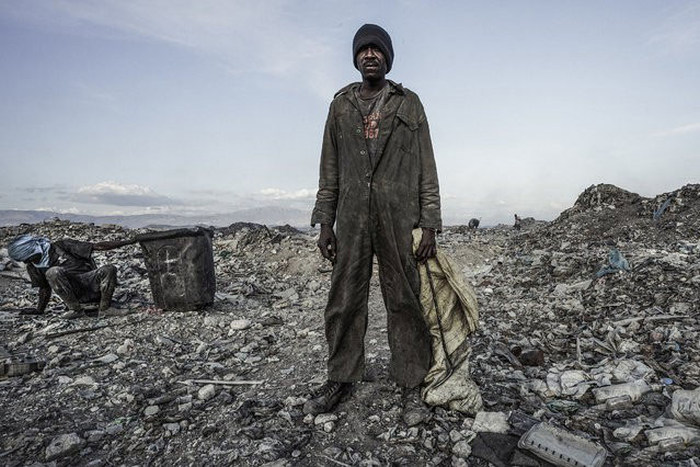|
|
Scavenging In Port-au-Prince, Ouest, Haiti
|
• In post-industrial countries
Though documentation exists of rag pickers and scrap metal collectors supplying goods to paper mills and foundries as early as the 17th century, modern waste picking did not flourish in the US and Europe until the 19th century. Just as in the developing world, the combination of industrialization and urbanization led to three trends which favored the blossoming of the informal waste collecting industry: increased generation of urban waste, increased demand for raw materials from industry, and increased numbers of urban dwellers in need of livelihoods. In that era, waste pickers were known as wharf rats, tinkers, rag and bone men, mudlarks, and ragpickers. By the mid-20th century waste picking decreased, as waste management industries were formalized, and welfare states decreased the poor’s reliance on informal recycling.
Beginning in the mid-1990s, however, informal recycling in parts of the United States and Western Europe once again began to mushroom. Two factors fueled the boom: First, the demand for recycling surged due to the increased waste stream, declining room in landfills, new recycling technologies, and the efforts of environmentalists. In 1985 only one roadside recycling program existed in the United States. By 1998, there were 9,000 such programs and 12,000 recyclable drop-off centers. Laws were passed in some states making it illegal not to recycle. Second, changes in the political economy including the loss of manufacturing jobs, cutbacks to government employment, and the roll back of the welfare state increased the ranks of the poor, working poor, and homeless—thus there were more people disposed to wastepick as a full-time profession or supplemental job.
American waste pickers predominantly collect cans, bottles, and cardboard. Many immigrants work as waste pickers because language and documentation barriers limit their opportunities to work elsewhere. Many homeless people also work as waste pickers—some describe it as their only alternative to panhandling. Some recyclers use vans to increase their yield while others work on foot with carts. Anecdotal evidence suggests that most American waste pickers are male, as waste picking is widely considered too dirty and strenuous a job for women. During an ethnography of homeless recyclers in San Francisco, sociologist Teresa Gowan claims to have met hundreds of male waste pickers, but only four female waste pickers.
|
|









